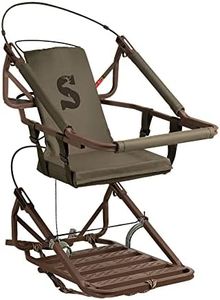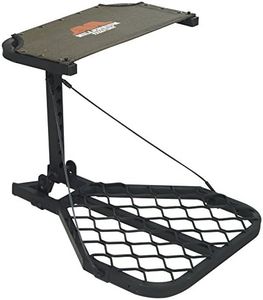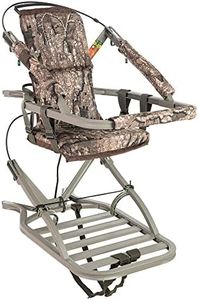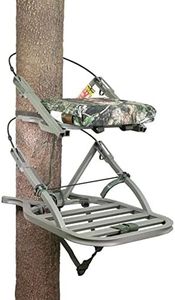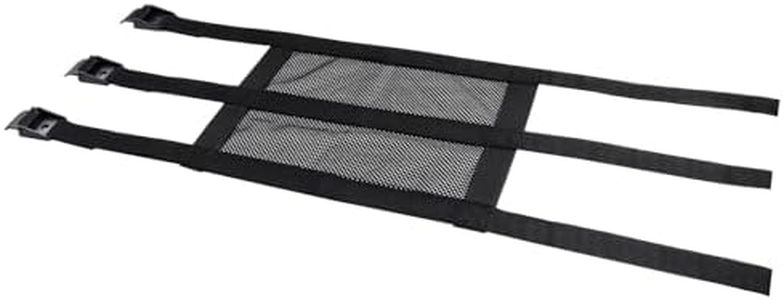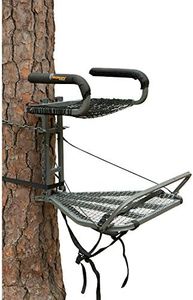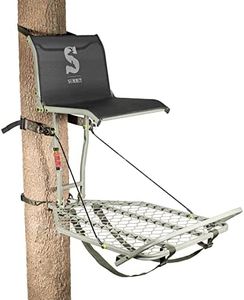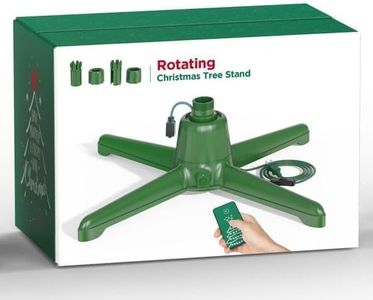We Use CookiesWe use cookies to enhance the security, performance,
functionality and for analytical and promotional activities. By continuing to browse this site you
are agreeing to our privacy policy
10 Best Climbing Tree Stands
From leading brands and best sellers available on the web.Buying Guide for the Best Climbing Tree Stands
Picking the right climbing tree stand can make your hunting or wildlife observation experience much safer and more enjoyable. Since you'll be relying on it for support while high up in a tree, it's critical to understand the most important features and how they align with your needs and preferences. Think about the kind of terrain you'll be using it in, your comfort requirements, and the need for portability. With a clear idea of when and how you’ll use the tree stand, you can better judge which specs matter most for you.Weight CapacityWeight capacity indicates the maximum weight the stand can safely support, including your body weight and any gear you carry. It's crucial for ensuring safety while using the stand. Tree stands are typically grouped into ranges such as up to 250 lbs, 300 lbs, or higher. Lighter stands with lower capacities might suit smaller users with minimal gear, while higher capacity stands are better for those carrying more equipment or needing extra space. Always pick a stand with a weight limit higher than your actual total weight to maintain safety.
Stand WeightStand weight refers to how much the tree stand itself weighs. This is particularly important because you’ll need to carry it to your chosen site, sometimes over long distances. Lighter stands (around 15-20 pounds) are easier to transport and are ideal for those who move frequently between trees. Heavier stands (25 pounds or more) may offer more stability and comfort but could be cumbersome to carry. Select the lightest stand that still meets your comfort, capacity, and durability needs if you plan to move often.
Platform SizePlatform size is the area on which you stand and place your gear. A larger platform provides more room to move and can offer greater comfort during extended use, but it often adds to the stand’s weight. Smaller platforms are lighter and more portable but may feel cramped, especially if you like to change positions or need space for extra gear. Consider your balance, gear needs, and how long you’ll be up in the tree when choosing platform size.
Comfort Features (Seat and Backrest)Comfort features, such as padded seats and backrests, vary widely among tree stands. They are important because you might spend several hours waiting in position. Some stands offer thick cushions and supportive backrests, while others are more basic. If comfort is a priority and you expect long sits, look for enhanced padding. If you’re mostly up for short periods or value a lighter setup, basic options might be just fine.
Climbing MechanismThe climbing mechanism is how the stand grips and moves up the tree, which affects both safety and ease of use. Some stands use cable systems, while others use bar or strap methods. Simpler systems are easier for beginners but may be slower, while more advanced systems can be faster and more secure for experienced users. Think about your comfort with heights and climbing techniques—if new to climbing stands, prioritize reliable, easy-to-use mechanisms.
Tree Size CompatibilityTree size compatibility tells you the range of tree diameters that the stand can safely attach to. Some stands fit slimmer trees, while others accommodate larger trunks. Before purchase, consider the trees common at your hunting locations—there’s no use in having a stand that won’t fit your chosen trees. Always check the minimum and maximum tree diameter ratings to avoid unpleasant surprises in the field.
Portability FeaturesPortability features include straps, backpack-style harnesses, or lightweight frame designs that make carrying the stand easier. If you often walk long distances, look for stands that fold up compactly or offer comfortable carrying straps. If your spots are close to accessible trails, portability may not be as critical. Your methods of transport and frequency of relocation are key factors in deciding how much emphasis to place on portability.
